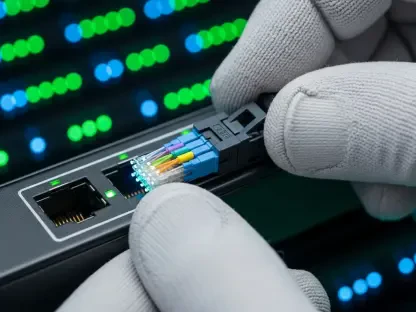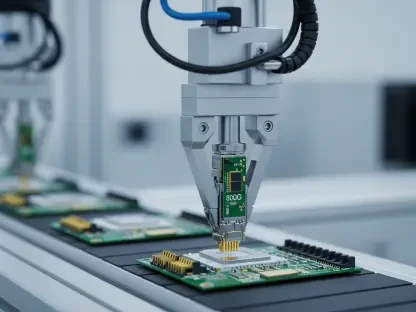The telecommunications and technology industries have seen a substantial influx of mergers and acquisitions this year as companies strive to better their technological capabilities. With a focus on expanding their strategic footprints and incorporating more advanced technologies like AI, fiber networks, and cloud services, these deals underscore the ongoing effort to stay ahead in the competitive landscape. This wave of M&A activity hints at a significant shift towards integrating smarter, faster, and more efficient solutions to cater to the ever-growing demands of the market and end-users alike.
Strategic Acquisitions Shape the Sector
One of the most notable transactions is Airspan’s acquisition of Corning’s wireless business, which includes DAS and small cell RAN products. This move is expected to bolster Airspan’s position within the open RAN and private networks sector, providing a robust infrastructure that supports enhanced connectivity and innovative wireless solutions. The acquisition is anticipated to bridge technological gaps and drive forward developments in wireless communication, reflecting a broader industry tendency towards more inclusive and adaptive strategies.
CityFibre, another significant player in the telecommunications field, has acquired ISP Connexin’s full fiber infrastructure. This deal is set to expand CityFibre’s coverage to an additional 185,000 premises while also integrating Connexin’s XGS-PON network into its operations. The strategic acquisition not only widens CityFibre’s reach but also incorporates advanced fiber technology, ensuring that end-users benefit from faster and more reliable internet services. This move mirrors a sector-wide emphasis on enhancing network capabilities to deliver superior connectivity solutions.
Enhancing Cybersecurity and Optical Networking
Google’s agreement to acquire cybersecurity company Wiz for $32 billion aims to strengthen its foothold in the CNAPP market. However, this deal faces regulatory scrutiny that may influence its completion. By integrating Wiz’s expertise, Google plans to enhance its cybersecurity measures and offer more potent solutions to protect against evolving cyber threats. This acquisition highlights the increasing importance of cybersecurity in today’s digital landscape where protecting data integrity and privacy is paramount.
Nokia’s completed $2.3 billion acquisition of optical vendor Infinera to bolster its data center and cloud offerings. This strategic move enables Nokia to launch new optical products that enhance the capacity and efficiency of data transmission. The acquisition allows Nokia to improve its competitive edge in the optical networking field, which is crucial for the high-speed data transfer demands of modern communications networks. By enhancing its hardware capabilities, Nokia aligns with the industry trend of integrating more sophisticated and high-performing network solutions.
AI Integration and Semiconductor Advancements
Qualcomm has made a decisive foray into the AI domain by acquiring Movian AI, the generative AI division of VinAI. This acquisition is set to significantly enhance Qualcomm’s AI research and development, allowing the company to integrate advanced AI technologies into its product portfolio. By focusing on AI, Qualcomm is positioning itself at the forefront of technological innovation, aiming to leverage AI capabilities to drive the next generation of smart devices and applications. This move reflects the broader industry trend towards harnessing AI to enable more intelligent and adaptive technological solutions.
Meanwhile, SoftBank has agreed to purchase semiconductor design company Ampere for $6.5 billion. This deal aims to advance AI compute power by utilizing the ARM platform, a crucial aspect in developing more efficient and capable AI systems. The acquisition marks a strategic pivot for SoftBank, channeling resources into the burgeoning field of AI and semiconductor technology. This industry-wide shift towards integrating sophisticated computing powers into AI is indicative of the growing demand for intelligent systems that can operate seamlessly across various platforms and applications.
Expanding Network Capabilities and Market Reach
In another noteworthy transaction, Swisscom finalized its acquisition of Vodafone Italia, combining fixed broadband and mobile services to better serve the Italian market. This strategic move allows Swisscom to introduce more competitive offerings, providing a seamless and integrated service experience for customers. The marriage of fixed broadband and mobile services exemplifies a trend where companies are diversifying their portfolios to offer comprehensive solutions tailored to the convergence of services.
Similarly, T-Mobile has completed a joint venture with EQT for the acquisition of Lumos, targeting substantial expansion in the fiber-to-the-home network. This venture aims to significantly enhance T-Mobile’s service offerings, providing unprecedented internet speeds and connectivity for a broader customer base. The emphasis on fiber network expansion underscores an industry-wide pivot towards delivering high-speed, reliable internet services that are essential for supporting modern digital ecosystems.
Summary of Key Takeaways
This year, the telecommunications and technology sectors have experienced a noteworthy surge in mergers and acquisitions as companies aim to enhance their technical capabilities. These strategic moves are primarily focused on broadening their reach and incorporating advanced technologies such as artificial intelligence, fiber networks, and cloud services. This trend reflects the ongoing efforts by businesses to stay competitive in a rapidly evolving landscape. The wave of M&A activities suggests a major shift towards integrating smarter, faster, and more efficient solutions that meet the evolving needs of both the market and end-users. Moreover, these mergers serve as a proactive response to the increasing demand for high-speed data and uninterrupted connectivity, which are becoming crucial in today’s digital age. The accelerated pace of technological development means that companies must continuously innovate and adapt to maintain their market positions. In summary, the recent mergers and acquisitions highlight the industry’s commitment to advancing technology to ensure optimal performance and customer satisfaction in an increasingly interconnected world.









